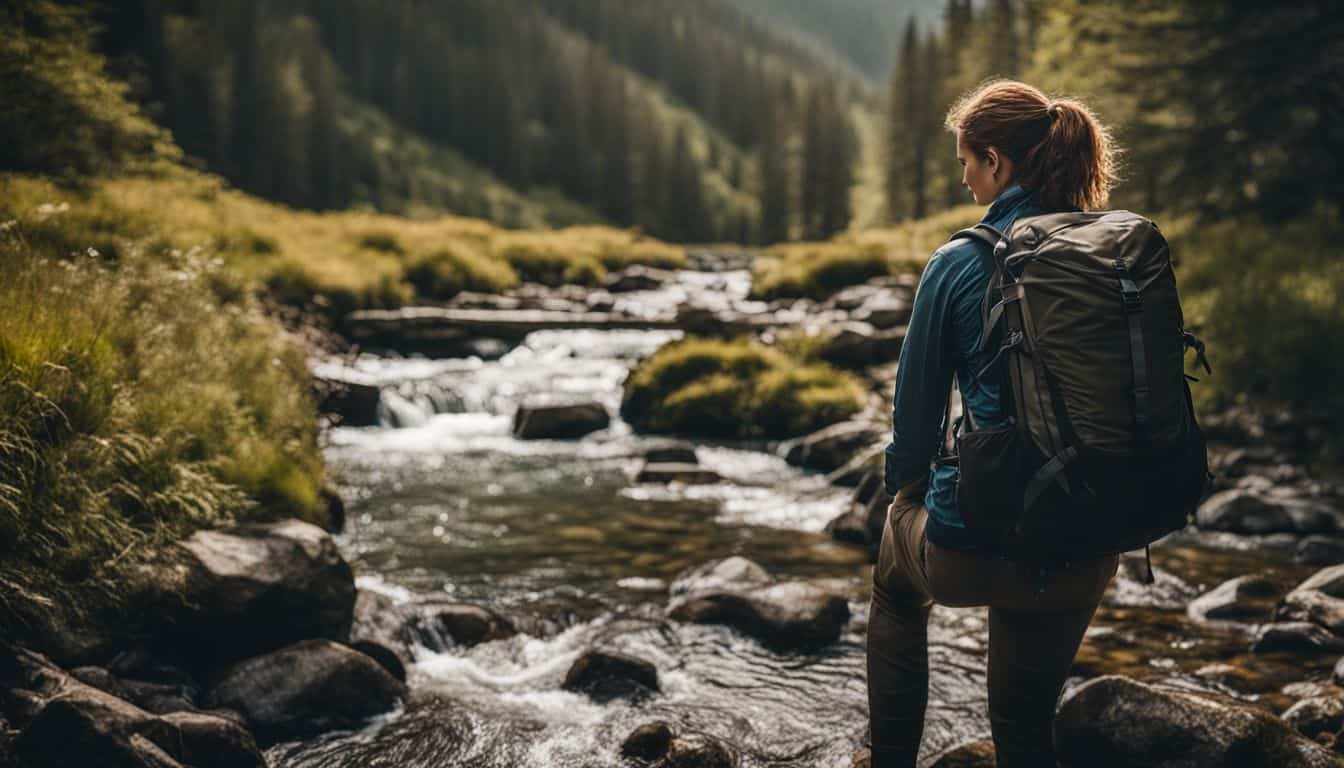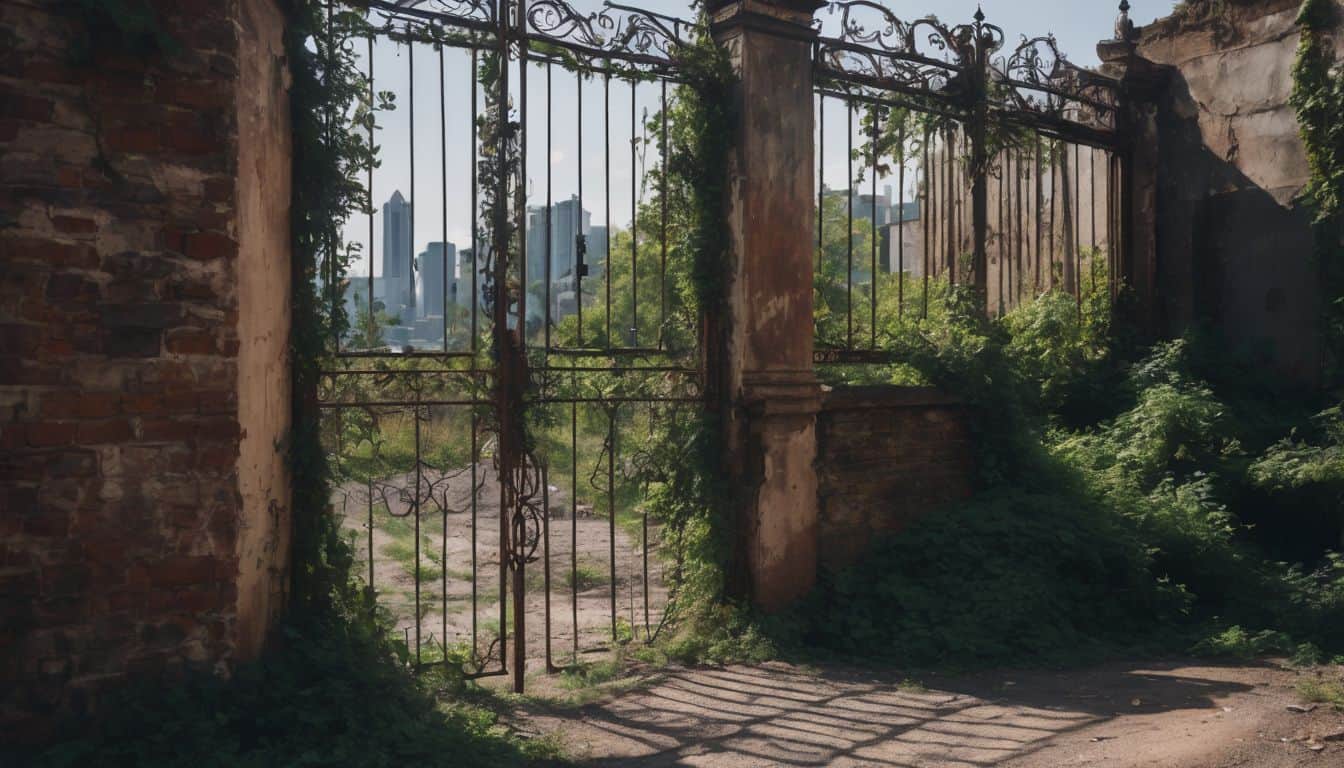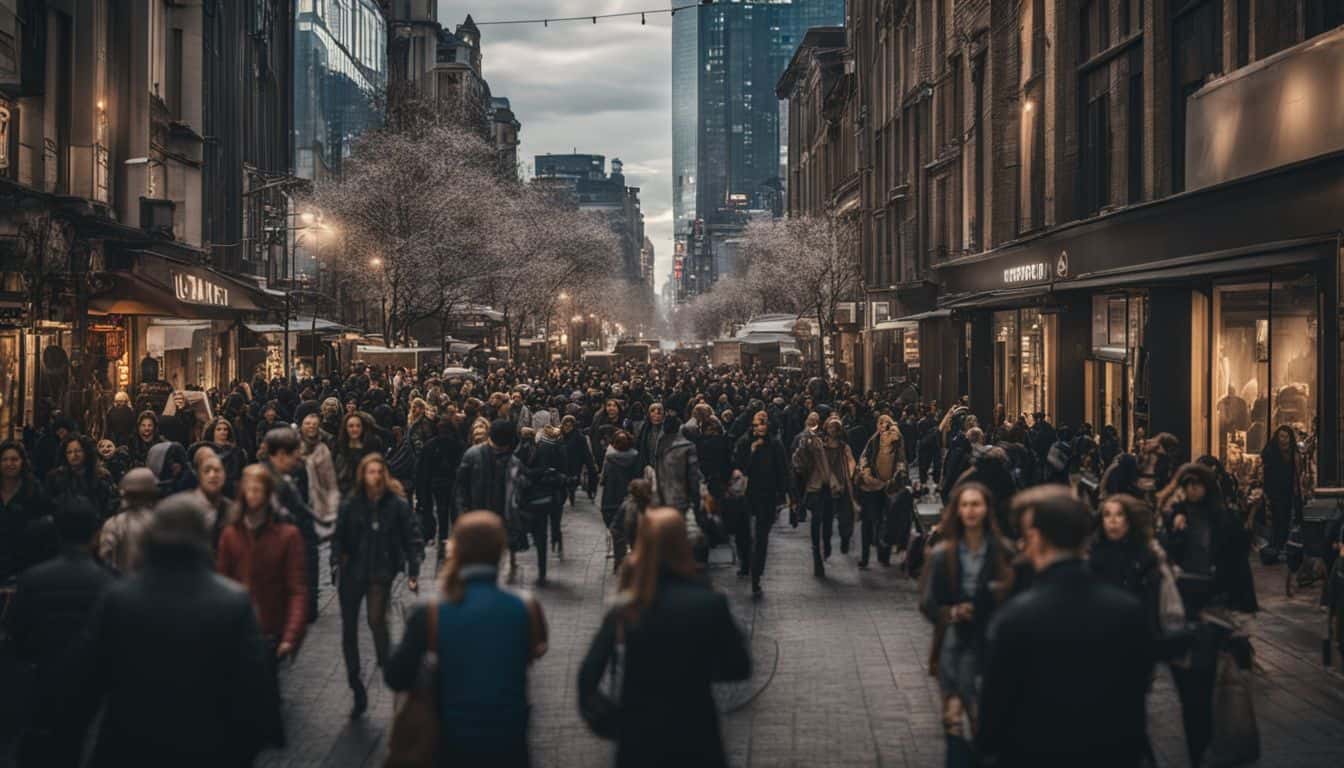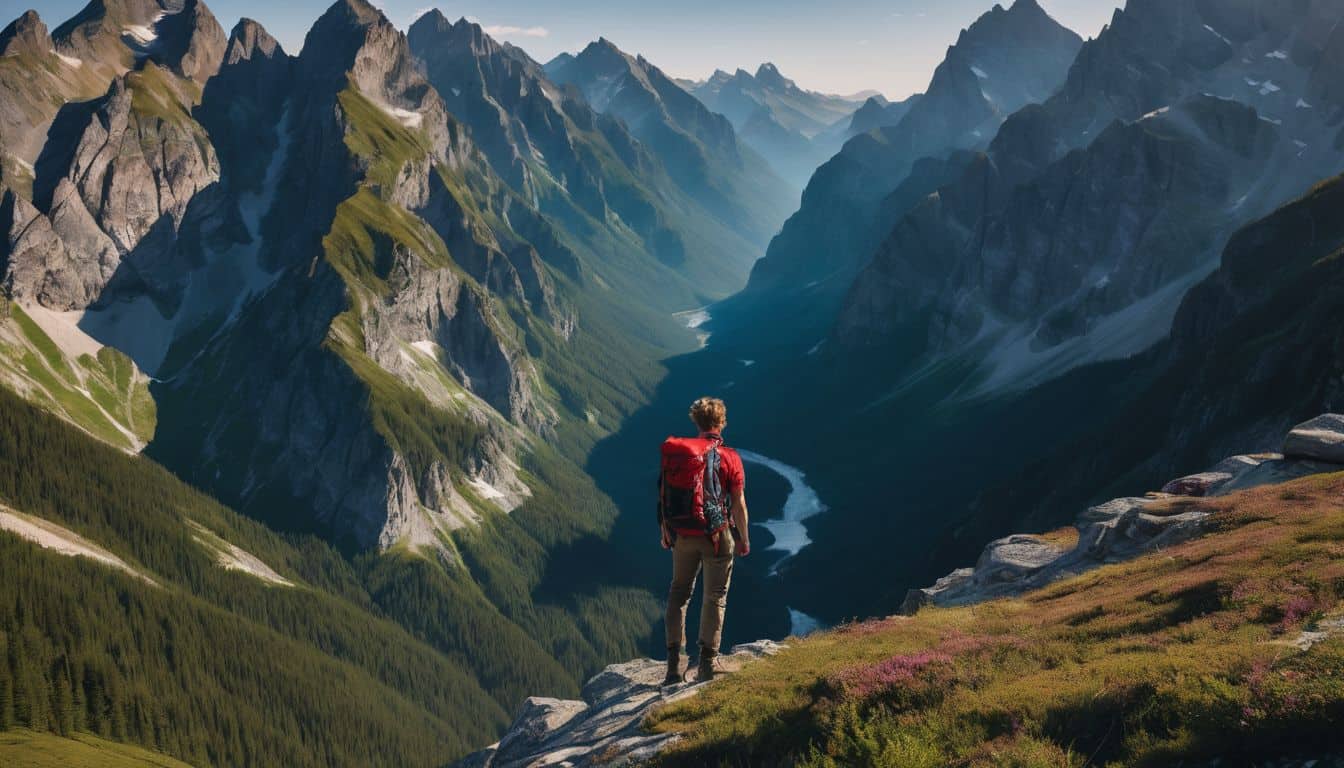Navigating an urban crisis can often feel like a test of strength and cunning that we never signed up for. As someone who’s come face-to-face with similar challenges, I understand the sighs of relief that come when you’re equipped with essential survival techniques to outsmart such situations.
This article is your treasure chest, containing 11 nuggets of vital urban survival skills — from mastering water purification to learning effective self-defense tactics — that could very well be your saving grace in unexpected scenarios.
Ready to dive into this maze of concrete jungle survival secrets?.
Key Takeaways
- Learn water collection and purification techniques, such as boiling water or using filtration systems, to ensure a safe drinking supply in urban survival situations.
- Develop foraging and scavenging skills by identifying edible plants and utilizing available resources in the environment.
- Blend in with your surroundings by dressing like locals, walking softly, and using shadows to stay hidden in urban areas.
- Improve situational awareness by paying attention to your surroundings and understanding potential threats. Stay alert and be prepared to react quickly if needed.
Water Collection and Purification

I’m a big fan of survival tips. Water collection and purification is one skill you need to learn.
- Start with finding a water source. This could be rain, a river, or even snow.
- Rainwater harvesting is great when it’s raining.
- Make sure the water is safe to drink. Waterborne diseases can make you very sick.
- You can use simple water treatment methods. Boiling water is often enough.
- Sometimes, you need to remove more than just germs. Water filtration helps take out tiny bits of dirt or other stuff.
- There are also special ways to clean your water. For example, water distillation removes almost all contaminants.
- Store your clean water safely. This way, you always have some ready to use.
- Finally, don’t assume your water is safe without checking it first. Use a water quality test if you can get one.
Foraging and Scavenging
I always remind myself how key foraging and scavenging can be in urban survival. Here below are some things I do to make sure I pull through:
- Hone your skills: I get my information from the book “Foraging: The Ultimate Beginners Guide.” It helps me learn about wilderness survival with foraging.
- Recognize edible plants: I make sure to identify what plants around me are good for eating. Some wild greens might not look tasty, but they can keep us going when there’s no other food.
- Utilize nature connection: By forging a strong bond with the natural world, you become more aware of available resources and understand better how to use them.
- Practice sustainable living: I try as much as possible to leave nothing behind and take only what I need to survive from the environment.
- Develop resourcefulness: Scavenging is a skill that comes into play here. With it, you’ll find useful items in unlikely places.
- Awareness of environment: Foraging lets you connect with native landscapes and gives you a sense of home anywhere in the city.
- Take up hunting & gathering: It is an old practice but has proven effective over time; it could just be your saving grace out there.
- Learn from experts: Draw lessons from books like “Wilderness The Bushcraft Skills” which offers 30 techniques on surviving in the wilderness, including foraging.
- Master self-sufficiency: When you know how to fend for yourself by living off the land, you increase your chances of making it out alive in unexpected situations.
- Remember scavenging value: People often overlook this aspect in research compared to predation, but trust me when I say it’s equally important.
Blending In/Moving With Stealth
Staying quiet and hidden is key when trying to survive in an urban setting. Here are ways you can blend in:
- Dress like the locals: This makes you less noticeable.
- Master walking softly: The quieter your steps, the less attention you draw.
- Learn to use shadows: Stick with darker areas where you’re hard to see.
- Keep lights low at night: It’s harder for people to spot you this way.
- Limit noise-making actions: This includes loud talking or movements that create sound.
- Avoid big crowds: They draw a lot of focus and might lead to danger.
- Use silent signals for communication instead of shouting or whispering.
Situational Awareness
Situational awareness is a really important skill for urban survival. It means being aware of what’s happening around you and understanding the information you’re getting. This helps you stay safe by identifying potential threats and making smart choices.
To improve your situational awareness, pay attention to your surroundings, notice any changes or unusual things, and think about how they could affect you. Stay alert and observe everything around you, so that you can react quickly if something goes wrong.
Being aware of your surroundings is crucial in emergencies or disasters too, when staying safe is really important. So remember to always be vigilant!
Home Security/Self-Defense
Keeping myself safe and secure is a top priority in urban survival situations. Here are some important skills and tips to master when it comes to home security and self-defense:
- Securing your home: Install sturdy locks on doors and windows, reinforce entry points, and consider a security system for added protection.
- Lighting: Ensure that the area around your home is well-lit to deter potential intruders.
- Verbal defensive skills: Learn how to assertively communicate with individuals who may pose a threat, using assertive body language and confident speech.
- Self-defense techniques: Take self-defense classes to learn effective moves that can help you escape from dangerous situations.
- Home evacuation plan: Create a detailed plan for evacuating your home in case of emergencies, including multiple escape routes.
- Personal safety devices: Carry pepper spray or personal alarms as an additional layer of protection.
Escaping Dangerous People/Riots
During urban survival situations, it is crucial to know how to escape dangerous people and riots. Here are some important skills to help you stay safe:
- Avoiding dangerous situations is the first step to staying safe in an urban environment. Be aware of your surroundings and trust your instincts.
- Navigating through crowds can be challenging during riots. Stay calm and move with purpose, avoiding areas of conflict.
- Tear gas protection is essential when dealing with riot situations. Carry a mask or bandana soaked in vinegar to protect your lungs from the effects of tear gas.
- Fire safety is crucial in urban areas prone to riots. Learn how to use fire extinguishers and establish escape routes in your home or workplace.
- First aid skills are invaluable during emergencies. Learn basic first aid techniques to provide assistance to others if needed.
- Effective communication is vital for survival in an urban environment. Develop clear and concise communication methods with your group or loved ones.
- Hygiene and sanitation are key in preventing the spread of diseases during riots or disasters. Properly dispose of waste and maintain cleanliness as much as possible.
Weapons Training and Safety
Weapons training and safety are crucial aspects of urban survival techniques. As a survival enthusiast, it’s important to prioritize personal protection and emergency preparedness.
This includes learning about firearm safety, tactical training, and martial arts techniques.
One valuable resource is the SAS Urban Survival Handbook, which provides guidance on self-defense methods, securing your home, and dealing with natural disasters. Additionally, TC 3-20.40 offers detailed information for building a unit training plan specifically for individual weapons.
Remember to invest time in first aid training as well. Knowing how to administer basic medical assistance can be lifesaving in a crisis situation. By acquiring these urban survival skills and being prepared for any possible danger or threat that may arise, you’ll increase your chances of staying safe during uncertain times.
First Aid and Medical
In urban survival situations, it’s important to have basic first aid skills and knowledge. Here are 9 tips for handling medical emergencies:
- Stay calm and assess the situation.
- Perform CPR if necessary.
- Make a splint for broken bones or dislocations.
- Clean and dress wounds to prevent infection.
- Learn how to perform the Heimlich maneuver for choking victims.
- Treat shock and hypothermia by keeping the person warm and comfortable.
- Stop bleeding by applying pressure or using tourniquets if necessary.
- Carry trauma shears, trauma dressings, Celox Rapid, chest seals, lighters, and permanent markers in your urban survival kit.
- Remember to seek professional medical help as soon as possible.
Handyman and Vehicle Repair Skills
Handyman and vehicle repair skills are essential for urban survival. As a survival enthusiast, knowing how to fix things and maintain vehicles can make a big difference in a crisis situation.
Being able to handle basic repairs around the house, such as fixing leaky pipes or repairing broken furniture, allows you to be self-sufficient and save money on hiring professionals.
Additionally, having knowledge of vehicle repair can help you keep your car or other modes of transportation running smoothly during uncertain times. Being able to diagnose and fix common issues like flat tires or engine problems gives you greater mobility and independence.
So, take the time to learn these handyman skills – they will serve you well in an urban survival scenario.
Bartering and Haggling
Bartering and haggling are valuable skills to have in urban survival situations. Here are some ways you can master them:
- Trade: Exchange goods or services with others instead of using money.
- Negotiation: Learn to discuss and reach an agreement that benefits both parties.
- Bargaining: Use persuasive tactics to get a better deal or lower prices.
- Commerce: Understand the principles of buying and selling in a post-disaster environment.
- Acquiring: Obtain necessary items by offering something you have in return.
- Alternatives: Look for creative solutions when traditional resources are scarce.
- Reciprocity: Build relationships by providing value to others in exchange for what you need.
- Transaction: Ensure fairness and trust in your exchanges, keeping records if possible.
- Swap: Trade items you no longer need for something more useful in survival situations.
- Saving money: Utilize bartering as a cost-effective way to acquire essential supplies.
- Maximizing resources: Make the most of what’s available by trading for necessities.
Nanotechnology
Nanotechnology is a really cool thing that can help us in our urban survival efforts. It’s all about working with really tiny particles and devices, like super tiny machines. Nanotechnology combines chemistry, physics, mechanics, and biology to create amazing stuff.
One way nanotechnology helps is in medical diagnosis and treatment of diseases. Nanoparticles can be used to detect diseases early on, before they become too serious. They can also deliver medicine directly to the affected areas in our bodies.
Another way nanotechnology helps is by fighting antibiotic resistance. This is when bacteria become resistant to antibiotics and it becomes hard to treat infections. Nanotechnology-based products have shown promise in inhibiting different pathogens like viruses and stopping them from spreading.
So you see, nanotechnology has a lot of potential when it comes to urban survival techniques. It’s exciting to think about how these tiny particles and devices can help us stay safe and healthy in tough situations.
Acoustic nanotube technology
Acoustic nanotube technology is an advanced method of water filtration. Instead of removing contaminants from water, it pushes them away using microporous membranes and filtration devices.
This technology is different from traditional methods because it utilizes the properties of nanotubes to separate water from contaminants. It has been found to be effective in purifying water and can help address issues related to water scarcity.
With acoustic nanotube technology, we have a promising solution for filtering water and ensuring its safety for drinking or other uses during survival situations.
Photocatalytic water purification technology
Photocatalytic water purification technology is a really cool way to clean up polluted water. It uses a process called photocatalysis, which can break down contaminants and remove pollutants from the water.
This technology is promising for treating wastewater, and it can be done at normal temperatures and atmospheric pressure. The best part is that it’s low-cost, environmentally friendly, and sustainable.
N-TiO2 photocatalysts have shown potential for recovering and reusing water, which is great for areas where clean water is scarce. Another interesting thing is that there hasn’t been much research done on combining solar disinfection with this type of water treatment recently.
Overall, using photocatalytic technology could help us make contaminated water safe to drink while also being good for the environment.
water recovery,
water reuse,
low-cost,
environmentally friendly,
sustainable,
solar disinfection
Aquaporin Inside™ technology
Aquaporin Inside™ technology is a special kind of membrane that can filter water. It doesn’t need heat or high pressure to work. This technology copies how nature purifies water, so the drinking water it produces tastes really good.
Aquaporin Inside™ technology can also be used to treat wastewater. It works in a similar way to how plants get water from the soil. Aquaporins are channels in cell membranes that transport water and other small things across them.
They’re important for things like our immune system and male reproductive organs. So, this technology is not only helpful for survival situations but also has many other uses too!
Conclusion on Urban survival techniques
Mastering urban survival techniques is crucial for navigating a crisis in the concrete jungle. From collecting and purifying water to learning self-defense and first aid, these skills can save lives.
Don’t underestimate the importance of being prepared and knowing how to thrive when resources are scarce. By mastering these 11 underrated urban survival skills, you’ll be ready to face any challenge that comes your way.
Stay safe, stay vigilant, and be prepared for anything that may come your way in the city.
FAQs on Urban survival techniques
1. What are some urban survival techniques?
Urban survival techniques include learning basic first aid, knowing how to start a fire, finding safe drinking water, navigating without GPS, and being prepared with essential supplies.
2. How can I stay safe in an urban environment during an emergency?
To stay safe in an urban environment during an emergency, it’s important to have a plan, stay alert to your surroundings, avoid dangerous areas or crowds, and have necessary supplies like food and water.
3. What should I do if there is a power outage in the city?
During a power outage in the city, it’s advisable to keep flashlights or portable lanterns handy, conserve battery on electronic devices for emergencies only, and avoid opening refrigerators or freezers unnecessarily to preserve food.
4. How can I protect myself from potential threats in an urban setting?
To protect yourself from potential threats in an urban setting, practice situational awareness by observing your surroundings and avoiding isolated areas at night. Additionally, learn self-defense techniques and carry personal safety tools if legal.
5. What are some important items to have in my urban survival kit?
Important items for an urban survival kit include non-perishable food and water supplies for at least three days per person; a flashlight with extra batteries; a first aid kit; cash; multi-purpose tools like Swiss Army knife; maps of local area; batteries for electronic devices; and personal hygiene items (toilet paper etc.).






Leave a Reply